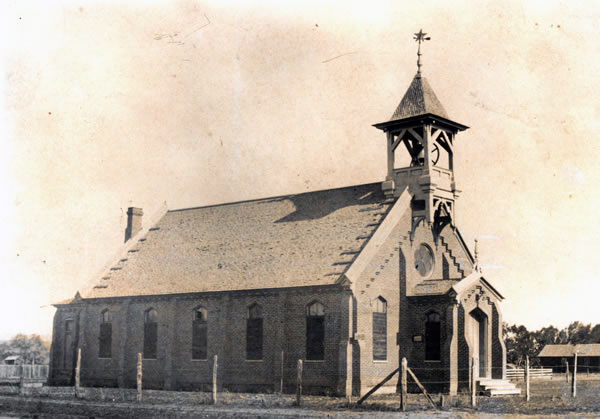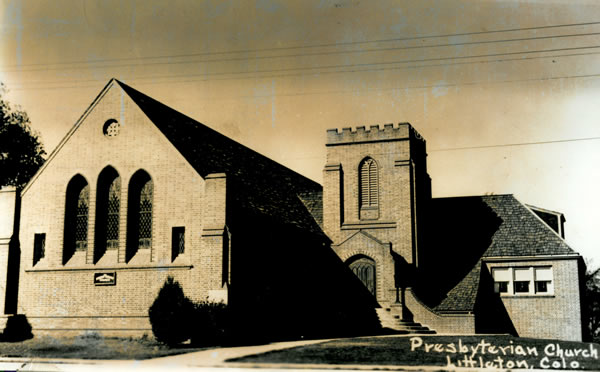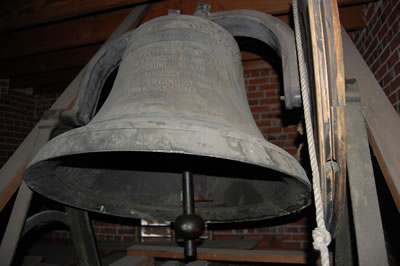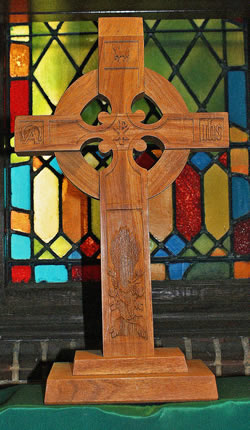On November 4, 1883 a group of eighteen individuals, optimistic about the future of Littleton, organized the Presbyterian Church of Littleton. The Reverend Thomas E. Bliss was called as the first pastor. In the beginning, the new church met in the local school. By 1886, the congregation was growing and needed a larger, more permanent space. They purchased a vacant church building, known as the “Brick Church” at the corner of Curtice and Main Streets in downtown Littleton.
In June of 1926, the Board of Trustees recommended that a new building be constructed. A site at the corner of “Littleton Broadway and 6th Avenue” (now Littleton Boulevard and Windermere Street) was donated by Mabel Ficklin. There was some grumbling from a few old-timers who were dubious about the wisdom of building “way out east of town.” A locally renowned architect, J.B. Benedict was chosen to design the new building that was completed for a grand total of $44,070. As the presbytery expanded, the name was officially changed to “First Presbyterian Church of Littleton” in 1960.
First Presbyterian Church of Littleton (FPCL) received the City of Littleton’s designation as an historic landmark in 1996. Erected in 1929, it is built in English Gothic style in a design that particularly fits the corner site. Benedict’s other buildings in Littleton include the Carnegie Library, the 1920 Town Hall, and his own home on South Gallup Street which is now the Carmelite monastery.
A Centennial History
First Presbyterian Church of Littleton A Centennial History was written and compiled by Jan Brett and Virginia Kirkpatrick in 1986.
Bride’s Bell
This fascinating, historical bell was cast in 1874 by the Whitechapel Bell Foundry, a foundry that who also casts the hand bells used in our church today. The bell was a gift to Reverend James McFadden of the Episcopal Church and it remained hanging in the original Presbyterian “Brick Church” on Main Street. Considering the bell his personal possession, Dr. McFadden presented it to his bride as a wedding gift. Yet, ownership of the bell remained controversial until Mrs. Harriet McFadden sent a letter to the Presbyterian Church of Littleton officially bestowing the bell to the congregation in 1926. Today the “Bride’s Bell” still rings at weekly worship services and, of course, for every wedding.
Celtic Cross
This Celtic Cross was carved by Dr. J. Russell Chandler, pastor from 1947-1964. It is made from a piece of olive wood brought to Colorado from South America by Bob Robinson. Bob Robinson, along with fellow-parishioner Del Peden designed the cross. It remains in the sanctuary as a symbol of our faith and our Presbyterian heritage.
Bibliography
Hulse, Doris Farmer. “A History Of the First Presbyterian Church Of Littleton, Colorado, 1883-1995” in First Presbyterian Church Of Littleton, Colorado. Littleton, Colorado, Church Records, Volume I. Littleton, Colo.: Columbine Genealogical and Historical Society, 1995.





Recent Comments